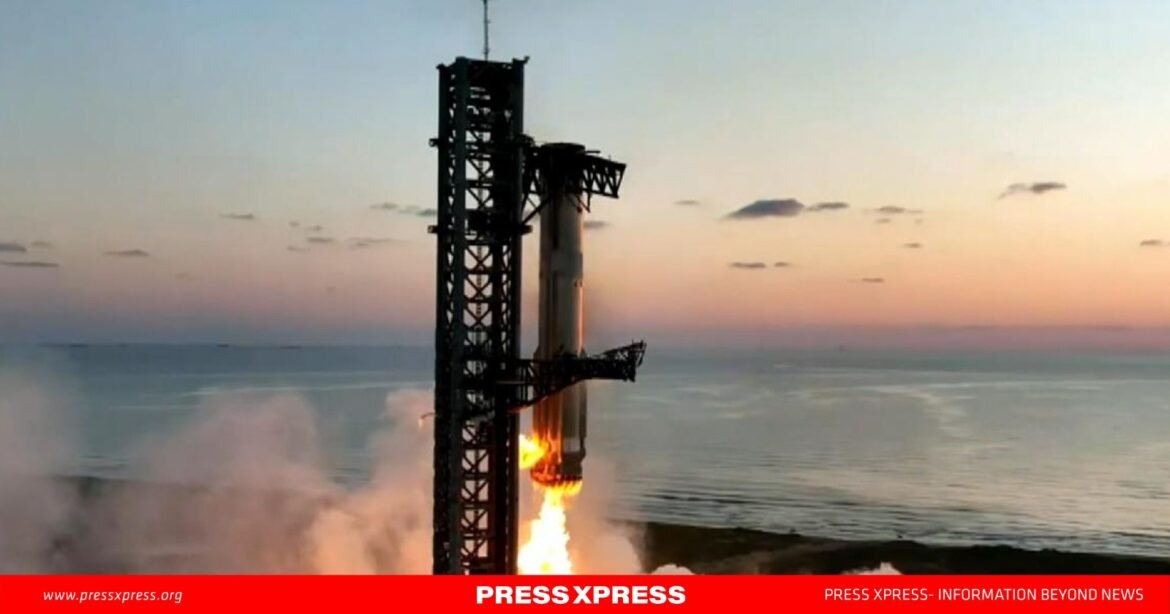Amazingly, SpaceX plans to conduct a critical in-space refueling test with its Starship rocket early next year, a significant milestone that NASA officials say could pave the way for a crewless lunar landing demonstration. The proposed test, set for March 2025, will see SpaceX attempt to transfer propellant between two Starship spacecraft in Earth orbit — a move essential for supporting long-duration missions to the Moon and beyond.
NASA, which has partnered with SpaceX as part of its Artemis lunar exploration program, awarded the company a $4.05 billion contract to develop two human-rated Starship vehicles. Under this contract, Starship’s upper stage will play a pivotal role by landing astronauts on the Moon, marking the first lunar surface visit since the Apollo missions. The first crewed landing is projected for September 2026.
NASA’s Role and Contractual Approach
Kent Chojnacki, deputy manager of NASA’s Human Landing System (HLS) program, highlighted NASA’s distinct approaches to the HLS and Space Launch System (SLS) programs. Unlike the cost-plus contracts used for SLS, which cover developmental expenses and have faced scrutiny for high costs, HLS contracts are fixed-price. SpaceX, for example, will receive $2.99 billion upon reaching certain milestones, fostering a more streamlined and cost-effective approach. So far, SpaceX has met five of its milestones, including an October 13 test where its Super Heavy booster was successfully caught mid-air by the launch tower’s “chopstick” arms.
“Each test brings new insights,” Chojnacki noted, adding that the upcoming refueling test will be a landmark achievement. If successful, it will set the stage for large-scale cargo and human missions beyond Earth’s orbit.
Why NASA joins Hand with SpaceX?
SpaceX has become a key organization that leading the space exploration. It has many successes, including:
First private company to launch, orbit, and recover a spacecraft
- In 2010, SpaceX became the first private company to accomplish this feat with the SpaceX COTS Demo Flight 1.
First private company to send a spacecraft to the International Space Station (ISS)
- In 2012, SpaceX became the first private company to send a spacecraft to the ISS with the SpaceX COTS Demo Flight 2.
First orbital-class rocket landing
- In 2015, SpaceX became the first company to land the first stage of an orbital-class rocket on land with the Falcon 9 Flight 20.
First landing of an orbital-class rocket’s first stage on an ocean platform
- In 2016, SpaceX became the first company to land the first stage of an orbital-class rocket on an ocean platform with the SpaceX CRS-8.
First reflight of an orbital-class rocket
- In 2017, SpaceX became the first company to reflight an orbital-class rocket.
First launch of the Falcon Heavy
- In 2018, SpaceX launched the Falcon Heavy for the first time, successfully landing two of its three boosters.
Starship launch
- In October 2024, SpaceX launched its Starship rocket from Boca Chica, TX and successfully caught the booster portion of the rocket back at the launch pad.
Preparing for a New Era in Space Exploration
In addition to technical reviews, NASA and SpaceX have maintained close collaboration on the vehicle’s design and functionality. SpaceX engineers are building full-scale Starship mockups at their Boca Chica site, allowing NASA astronauts to provide input on the crew cabin, including sleeping and laboratory areas.
By next summer, Starship will undergo a Critical Design Review (CDR), a process certifying that it meets NASA’s 27 design requirements. NASA has contributed to aspects of Starship’s technology, particularly in testing thermal tiles essential for managing cryogenic fuel temperatures. These partnerships reflect NASA’s new hands-off approach, focusing on mandatory review points while allowing SpaceX flexibility to innovate and set additional milestones for funding.
Propellant Transfer: Key to Future Mars and Moon Missions
The upcoming refueling demonstration is not just about testing; it’s a necessary step toward enabling SpaceX to send larger payloads to more distant destinations. Refueling capabilities would open avenues for lunar and Martian missions, potentially transforming Earth-to-space logistics by reducing the need for multiple heavy-lift launches.
Starship’s reusable design also sets it apart from NASA’s SLS. While SLS costs over $2 billion per launch with no reusable parts, SpaceX’s approach aims for frequent reuse, as seen in their recent successful mid-air booster catch. Elon Musk, SpaceX’s CEO, has confirmed that in the near future, the Starship upper stage may also attempt landing catches, although missions to the Moon and Mars will likely utilize conventional propulsive landings with landing legs.
If all proceeds as scheduled, Starship’s first crewed lunar landing in September 2026 could mark the beginning of a new era in space exploration, with spacecraft capable of efficiently moving between Earth and distant realms.


